
15 minute read
Food/Drink: Food news and what to try this week in Boulder County
JAMAICAN JERK CATCH OF THE DAY. Market price. 218 Coffman St., Longmont, tortugaslongmont.com
TRY THIS WEEK: Jamaican Jerk Catch of the Day @Tortugas
Advertisement
WE’LL CUT TO THE CHASE: If you want to eat seafood in Boulder County, your first stop should be Tortugas in Longmont. Their menu borrows from Caribbean, Southern and Creole cooking traditions and features fresh catches, prepared simply and accompanied by bright, flavorful sauces, slaws and garnishes. Stop in and order the catch of the day (mahi-mahi on a recent visit) and your choice of preparation: Cuban mojo (sage, citrus and spices); Voodoo (dynamite étoufée sauce and dirty rice); West Indian curry; or, our choice, Jamaican Jerk — grilled with habanero, mustard, honey and a robust spice blend and topped with mango salsa. The grill provides irresistible smoky flavor, and the fish is cooked with precision. Served alongside maybe the best sweet potato fries in existence, and earthy, porkified collard greens.
1
n New stall in Rosetta Hall
TOP CHEF FINALIST Carrie Baird has departed Denver’s acclaimed Bar Dough and will open Rose’s Classic Americana this spring at Boulder’s Rosetta Hall. She will team with Natascha Hess of the food hall’s Ginger Pig to form the That’s What She Said restaurant group. The eatery replaces Justin Brunson’s Folsom Foods with an all-day menu featuring her famous huevos rancheros that Beat Bobby Flay.
2
n You should have some margaritas this weekend
C E N T R O
CLIMATE CHANGE, BLOOMBERG ADS, sidewalk shoveling: none of us need an excuse to drink this weekend. But if you do, it also happens to be National Margarita Day on Saturday, Feb. 22. To celebrate, Big Red F’s Centro Mexican Kitchen and Zolo Grill are offering specials. Zolo’s got their house marg available for $5 all day long and prickly pear versions for $7. Also feel free to dive into their selection of 250-plus tequilas and mezcals. Centro’s got a weekend-long event with $5 margs before sunset, $8 frozen margs and a variety of other specials.

It’s been said that if beer didn’t already exist, no one would have invented it. That’s probably true; for all its simplicity, beer involves a series of complex processes and transformations, none of which occur without some form of human intervention.
And it all begins with the malt. Often called the “soul of beer,” the primary function of malt is to provide yeast the fermentable sugars (maltose) needed to produce alcohol. Additionally, malt contributes color (pale, amber, brown, black, etc.) as well as body (sometimes called mouthfeel) and a variety of flavors.
Go back through history, and you’ll find brewers all over the world using just about every cultivated cereal grain as malt, but then as is now, barley is by far the preference. And, similar to coffee beans, where barley is grown does provide some nuances, but the roasting process is where the action is.
The process begins simply: barley is harvested and soaked in water — which forces the seeds to germinate and sprout. Once they do, the maltster arrests germination by drying and roasting the grains, turning them into malt. Here is where the maltster decides the flavors the malt will produce in the brewing process. Most malts are roasted or kilned with either indirect heat (creating palecolored malts, which yield flavors of cracker, bread and biscuit) or direct heat to generate darker colors and acrid flavors. In between those two reside a sea of colors and flavors, such as caramel, toffee, coffee and chocolate. The malt can even be smoked, which will impart the characteristics of the wood used (applewood, beech, hickory, etc.), which suffuses the beer during the brewing process. Other grains can be malted (wheat, corn, rice, etc.) either for flavor, mouthfeel or fermentable sugars. These malts can come whole (and must be milled before use) or flaked. Some styles even take on regionalisms: Vienna malts are brown and biscuity while Munich malts are darker and bready. Pilsner malts give Pilsners their light straw color, while chocolate malts give stouts a rich black. Next time you’re near a homebrew supply shop, take a peek at the malt room, and you’ll be gobsmacked by the variants and options available.
Much like other ingredients in beer, local brewers have turned to local maltsters in search of local flavors. Troubadour Malting in Fort Collins routinely pairs with area breweries to produce beers made from all-Colorado ingredients. To wit: Odd13 Brewery in Lafayette makes The Colorado Kid, a hazy IPA with 100% Troubadour malt. Root Shoot Malting in Loveland and Colorado Malting Company in Alamosa also produce a wide array of Colorado base and specialty malts.
Every beer you drink conveys some sense of malt, from the pillowy mouthfeel of a juicy/hazy IPA to the dark, roastyness of porters and stouts. No sip of beer is complete without a moment for the malt: The crucial ingredient that connects brewers throughout the ages. While wine occurs naturally, beer requires purpose and intent. One does not haphazardly ferment a beer, nor should one haphazardly drink it. Know your Brew: Malt The soul of beer by Michael J. Casey

Uhl’s Brewing Co. — The Big Molé Imperial Stout by Michael J. Casey

THOUGH HE HASN’T opened his Boulder taproom yet, you ought to be familiar with one of Aaron Uhl’s ales — especially if you’re a hophead digging the 21st century hazy craze.
But in addition to all those dry-hopped juicy/hazy IPAs, Uhl makes one mean stout. His Big Molé Imperial Stout has been known to frequent a can or two, but tastes best on tap. Lucky for you, The Big Molé is one of the guest stouts featured at Mountain Sun Pubs & Breweries’ Stout Month.
Clocking in at a deceptive 13% alcohol by volume, The Big Molé is jet black with a slight translucent brownish/reddish rim. It comes sans head — evidence of its high ABV — but the nose exhibits plenty of cinnamon and vanilla and a tickle of peppery spice. The brew is full and creamy in the mouth, with a good deal of heat between rich and decadent malts. The heat lingers but doesn’t overwhelm. According to the tasting notes, it’s a rather international affair: The cinnamon is of Indonesian and Vietnamese origin, the cacao nibs are courtesy Ecuador, the ancho chilies hail from Mexico and the vanilla beans are Tahitian.
It’s outstanding. Here’s hoping that when Uhl does open his taproom in March — at 5460 Conestoga Court, Boulder — The Big Molé will be a staple.
A MODERN SHRINE TO REGIONAL MEXICAN CUISINE
Our kitchen is 100% Gluten Free
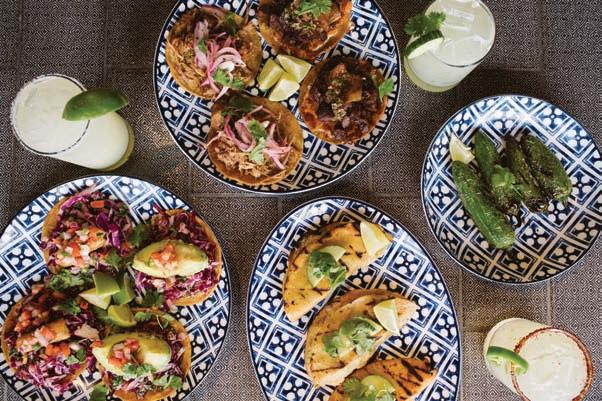
#EatMoreTacos
SUN l THURS 11am - 9pm l FRI l SAT 11am - 10pm

TeocalliCocina.com l 103 N Public Road, Lafayette l 303.284.6597
Clint and MaryKay Buckner on how to raise animals for meat by Matt Cortina
Iwas sitting in Blackbelly one afternoon when a rock star walked in. The butchers dropped their tools and shook hands with the man in a puffy coat. Minutes later, they left to unload what must have been hundreds of pounds of meat from a truck.
“That’s Clint Buckner,” I was told, as if I were supposed to know that already.
I, and you, can’t go too many places in Boulder County without seeing Buckner Family Farm, or their trade name Boulder Lamb & Meats, on the menu. Restaurants emblazon it on their menus as a point of pride. It’s local, all grass-fed, they say, and it’s the best meat you’ve ever tasted. I’ve since had Buckner Family Farm pork, beef and lamb many times and, yes, it’s good — one of the most memorable meals I’ve ever had is a 3-oz Buckner filet mignon I once took home and grilled. I literally scraped off the caramelized onions and herb butter I’d topped it with after one bite because the meat’s flavor and texture were singularly perfect.
But I didn’t know why it tasted so
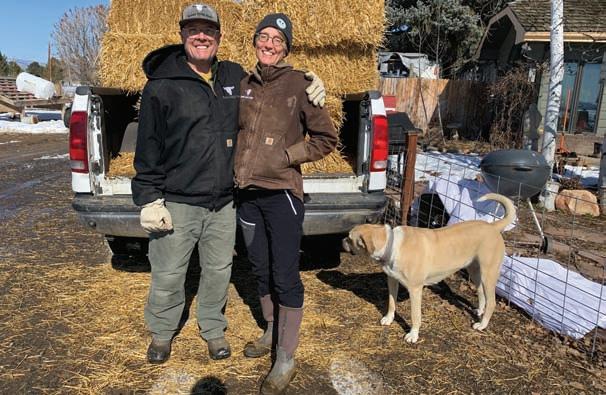
good, and why so many chefs in Boulder County seem to agree on how good it tastes. So I visited the Buckners one morning on their Longmont ranch. There’s one plot with around 27 acres where pigs and chickens walk freely and lambs graze in a herd, and another 800-some acres leased from the County where the animals graze on alfalfa — for the lambs and cattle, no corn, no grain, just grass.
“We really believe in animals eating what they’re supposed to eat and having an existence that they’re supposed to have,” MaryKay says from their modest kitchen, Clint sharpening knives in the sink.
But learning the day-to-day mechanics of raising 350 sheep, 400 cattle and 150 pigs per year took some time.
“We knew absolutely nothing,” MaryKay says of their beginnings in 2011.
If there is a routine on the ranch, it’s the routine an ER doctor has— clock in, scrub up and go where you’re needed. In fact, it’s an apt metaphor for the hands-on training the Buckners have undergone on the ranch.
“Let’s just say this,” Clint says, “I have personally done amputations. I’ve done castrations on every species that we have, I’ve stitched up wounds with dental floss and betadine, and at first we didn’t know how to do any of that stuff.”
The meat the Buckners sell is literally hand-raised. Animals live more than twice as long on the ranch than they do in conventional farms, which contributes to better-tasting meat. Cattle are raised to over 2 years old, which is extremely uncommon. Lambs are slaughtered at one year, as opposed to five months.
“Which adds a lot of fat,” Clint says of fattening lambs and slaughtering them young, “but it doesn’t necessarily add a lot of complex flavor. Americans are really used to fat as a flavor, but when you get some of our meat, the difference is it tastes more like meat and less like fat.” The animals on the Buckner Family Farm will all die some day.
see FEAST Page 36
n ‘We were about to go bust’
CLINT AND MARYKAY BUCKNER both grew up around farms — MaryKay in Nebraska, her parents butchers; Clint’s family owned one of the largest sheep ranches in the country in Twin Falls, Idaho.
But in 2008, Clint was working as a mortgage broker, when “that job basically died.” So with two small children, and some hands-on help from the family, the Buckners decided to make a go of it in the lamb game — selling wool, not meat.
“We quickly discovered that the wool market is not profitable at all,” Clint says.
Out tens of thousands of dollars and with few options, MaryKay suggested having one of their lambs slaughtered. They brought the meat around to restaurants in Colorado.
“The first place we went, they just were like, ‘Oh, this is amazing. How do I get more of this?” Clint says.
So the two former vegetarians who met 30 years ago at Alfalfa’s started raising lambs for meat. The Buckners won early support from local chefs Kyle Mendenhall, Samuel McCandless and Alberto Sabbadini and restaurants like Frasca, the Stanley Hotel and Aspen’s esteemed The Little Nell, which soon took to ordering six lambs per week.
Today, the business has grown with the help of the local food scene: “It’ll sound like [we sell to] a lot [of restaurants], but we only sell a little bit to each one, because what we try to do is sell the whole animal. Let’s say Salt wants all the pork chops in a week, then we’ve got to figure out how to sell the shoulders and bellies and necks to somebody else. So one of our main jobs is to figure out how to sell the whole animal because, as you know, animals don’t grow in parts,” Clint says.
“We really rely on having chefs who understand that about us and are really flexible.”

High end quality meats Catering also available

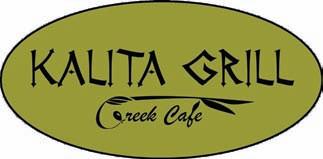
CAN’T BUY HAPPINESS BUT YOU CAN BUY LOCAL & THAT’S KIND OF THE SAME THING. 20-50% off gift cards bestofboulderdeals.kostizi.com YOU


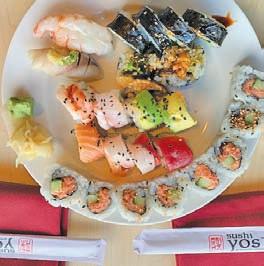
Where to get Buckner meat
Even though meat from Buckner Family Farm is ubiquitous in Boulder County, it helps to know where to look. Visit bucknerfamilyfarm.com or check their social media for monthly freezer sales to take home lamb chops, bacon, sausage, filets mignon and any and everything between that comes from cattle, pigs and sheep.
Below is a sampling of some dishes currently available at some of the county’s

best restaurants. Many of these restaurants have sourced meat from the Buckners since their inception in 2011, but note: “When you see our name, it doesn’t necessarily mean they’re buying from us,” Clint says, with a laugh. “They maybe bought from us for a few months, but then when we got a reputation of having this really great stuff, yeah, everybody wanted to keep our name on their menu.” It’s “free advertising,” he says. Really, he think it’s funny.
ARCANA: Buckner Family Farm Beef. Ribeye and brisket, sunchoke, collard greens with a red wine garlic purée.
BLACKBELLY: Buckner Family Farm Lamb. Braised roots, heirloom beans, fennel, lime, black hairs and petite herbs.
FRASCA FOOD & WINE: Toc in Braide. Anson Mills polenta, montasio and Buckner Family Farm goat
RIVER AND WOODS: “Jonathan’s Mom’s Lamb Kofte.” Buckner Family Farm lamb, preserved lemon yogurt, pomegranate molasses, crispy sweet potato bites and tahini dip. THE ROOST: Bucker Lamb Chops. Half-pound lamb chops, mint chimichurri and spicy curry lentils simmered with hardy vegetables
SMOKIN BOWLS: Longmont Bowl. Buckner Family Farm pork with roasted cauliflower, green chiles, avocado, roasted corn, heirloom tomatoes, cilantro, tortillas strips and Bangin’ sauce.
Also check out these regular Buckner Family Farm buyers: Avery, Lucky Pie, Santo, Jefe’s, Organic Sandwich Co. and 24 Carrots Bistro
fresh, authentic, tasty japanese food LUNCH Tue-Fri, 11:30am – 2pm DINNER Sun, Tue-Thu 5pm–9pm Fri-Sat 5pm – 10pm. Closed Monday Follow us on instagram: Sushiyoshilouisville AUTHENTIC JAPANESE CUISINE ][


FEAST from Page 35
Many will be sent to slaughter so we can eat their meat and put it on our menus and write stories about how good it all tasted. But the key to why it might taste so good, I realize, listening to Clint talk about the effort involved in raising these animals or watching MaryKay pet the friendly boar in the slop-pit munching on feed, is the love the Buckners have for their animals.
“We had a piglet once, it was like two days old, so it’s like the tiniest little thing ever,” Marykay says. “And I went out there one day and it had this gash. You could see all the way to its leg bone, but it didn’t strike an artery, so it wasn’t really bleeding. We called our vet who was just like, ‘Put it down.’ But Clint said, ‘You know, I’ve hunted, I’ve stitched stuff up, I’ve stitched up amputated legs. If it’s going to die anyway, let’s just try it.’
“I don’t know if you’ve ever picked up a baby pig. They squeal like bloody... and all the pigs come running at you because they’ve got this defense mentality. The sow will push through a fence to get to a baby piglet. So I ran it up to the house and our daughter came in, and we held it down, and Clint got dental floss. We got betadine and Neosporin, and he stitched it, and we put it out there and six months later it went to market. And it was beautiful. It was beautiful.
“I don’t know that I could ever lose that connection to the fact that every single one of them is a life,” MaryKay says. “And our whole thing is we want our animals to just have one bad day.”
1085 S Public Rd. Lafayette (303) 665-0666 Hours: Tues. Weds. Thurs. Sun 11am - 9pm Fri. Sat 11am - 9:30pm Closed Monday


Tu e sd ay
DINE IN • TAKE OUT Thank You for Voting us Best Asian Fusion Restaurant

LAFAYETTE
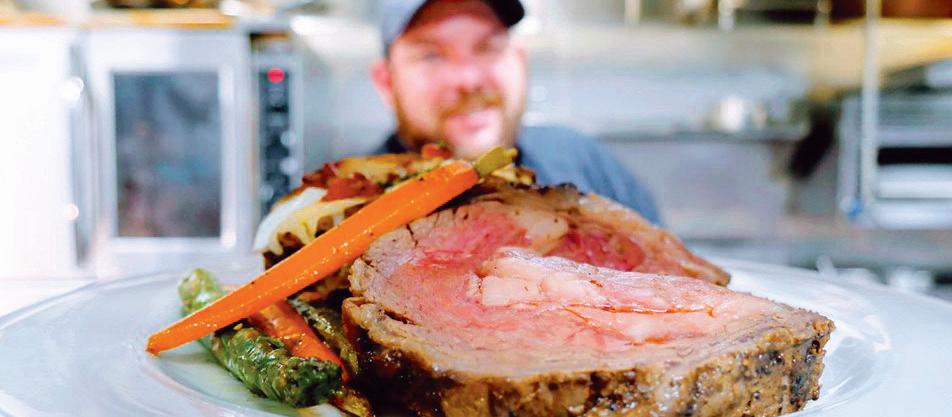

2016
night prime rib
(Tuesdays 5pm - 9pm)

Longmont Public House 1111 Francis Street, Suite A Longmont, Colorado 303.647.3755 longmontpublichouse.com
Fresh Authentic New York Pizza



We Deliver in Boulder Now Delivering (Hungry Buffs) 15% OFF ANY PIZZA PICK UP ORDER

Open Every Day 11am - 8pm
New Boulder Location

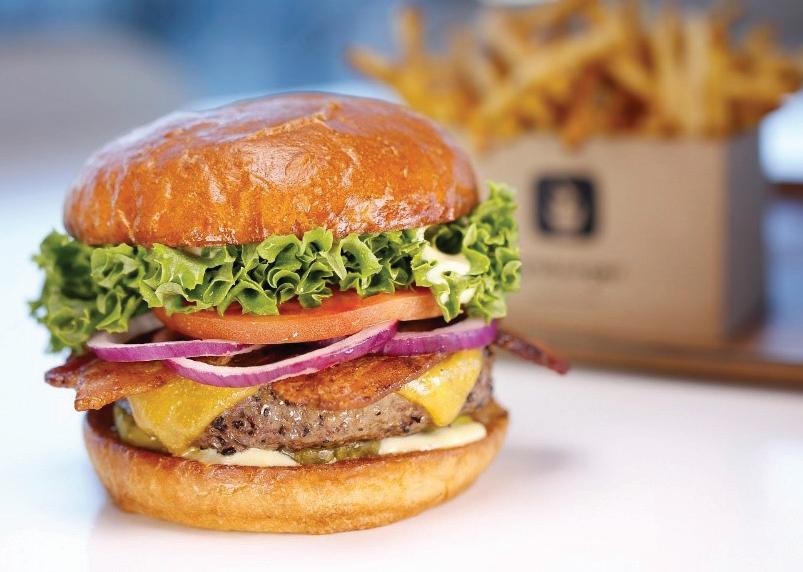

2525 Arapahoe Ave. (next to Zolo) 303.444.1487 • larkburger.com
Your place for wings




From fresh, never frozen, chicken to over 20 different hand-crafted sauces, and a large selection of deep fried sides and desserts, you can always find something to satisfy your hunger at Peckish.
1320 COLLEGE AVE, BOULDER | 720.475.1561 Check out our menu: www.peckishco.com












